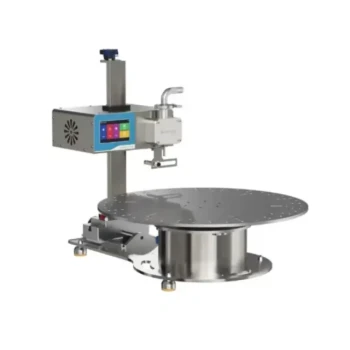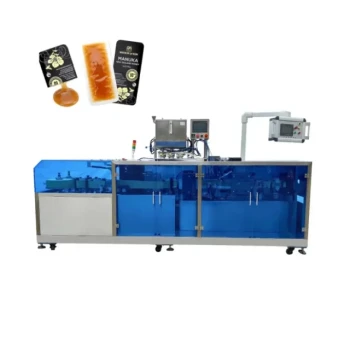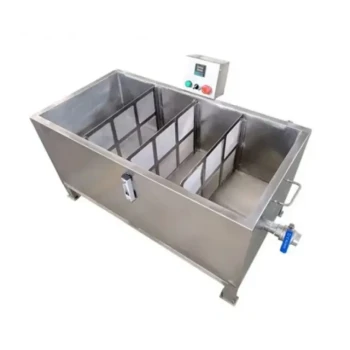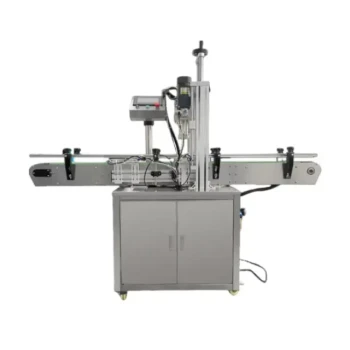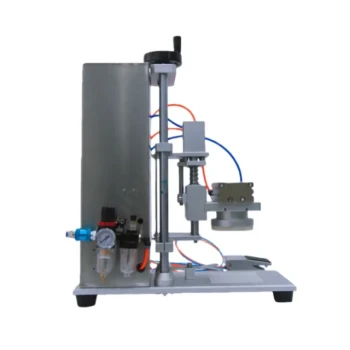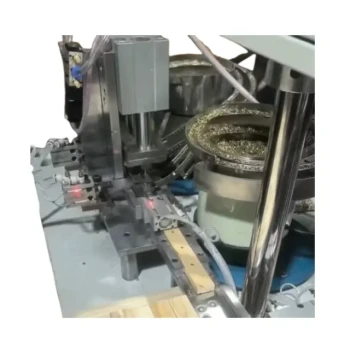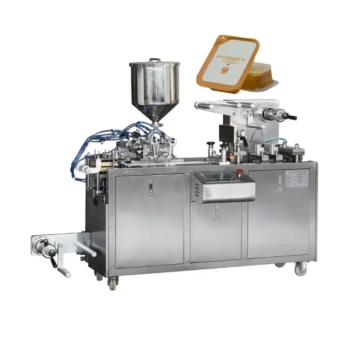To choose the right honey filling machine, you must evaluate five core factors: your required production capacity, the level of automation (machine type), the quality of materials used, the machine's precision and versatility with different containers, and the ease of maintenance and support. Considering these elements ensures you invest in equipment that aligns with both your current needs and future growth.
The best honey filling machine isn't simply the fastest or cheapest. It's the one that precisely matches your specific production volume, product characteristics, and operational workflow, ensuring a reliable return on your investment.

Aligning the Machine with Your Production Scale
The most fundamental decision is matching the machine's output to your business's demand. An oversized machine is a waste of capital, while an undersized one will create a production bottleneck.
Calculating Your Required Capacity
First, determine your current and projected production volume. Measure this in terms of jars or bottles filled per hour or per day.
This number is the single most important metric for narrowing down your options and preventing you from over-investing or under-equipping your operation.
Semi-Automatic vs. Fully Automatic Systems
Semi-automatic machines are ideal for small businesses and artisanal producers. They require an operator to place containers and initiate the filling cycle but offer a significant speed increase over manual methods.
Fully automatic systems are designed for large factories and high-volume operations. These machines manage the entire process from container feeding to filling and capping, requiring minimal human intervention and offering the highest capacity.
Ensuring Product Quality and Consistency
The machine you choose directly impacts the safety, consistency, and professional presentation of your final product.
The Critical Role of Material Compatibility
Your machine must be constructed from food-grade, corrosion-resistant materials. This is a non-negotiable standard for hygiene and safety.
Stainless steel is the industry standard for any parts that come into contact with the honey, as it prevents contamination and ensures the machine's durability over time.
Achieving Precision and Versatility
A quality machine provides high filling accuracy, preventing costly product waste from overfills and ensuring customer satisfaction with consistent volumes.
Look for a machine with adjustable settings. This versatility allows you to easily switch between different jar sizes and shapes, adapting to new product lines without needing new equipment. The machine must also handle the specific viscosity of your honey, which can vary significantly.
Understanding the Trade-offs and Long-Term Costs
The initial purchase price is only one part of the total cost of ownership. Maintenance, ease of use, and support are critical for long-term success.
Beyond the Initial Price Tag
Consider the ease of cleaning and maintenance. A machine that is difficult to disassemble and clean can compromise hygiene and increase downtime between batches.
You must also verify the availability of spare parts and reliable after-sales support from the supplier. A machine that cannot be repaired quickly becomes a major liability.
The Value of Simplicity
A machine with a simple, intuitive operating system reduces staff training time and minimizes the risk of user error. Complex machines can slow down production and increase operational costs.
Durability and Supplier Reputation
The overall durability is determined by the quality of the build materials, motors, and components. Always check for a manufacturer's warranty and look for reviews from other honey producers.
Making the Right Choice for Your Business
Selecting the correct machine is about making a strategic investment in your business's efficiency and potential for growth.
- If your primary focus is small-batch, artisanal production: A versatile, easy-to-clean semi-automatic machine made from stainless steel is your ideal choice.
- If your primary focus is scaling a growing business: Prioritize a robust semi-automatic or entry-level fully automatic machine with higher capacity and strong supplier support.
- If your primary focus is high-volume, industrial operation: Invest in a fully-automatic, high-speed system that can be integrated into a complete production line.
By carefully balancing these factors, you can confidently select a machine that serves as a reliable asset for your operation.
Summary Table:
| Factor | Why It Matters | Key Considerations |
|---|---|---|
| Production Capacity | Matches machine output to your demand | Jars/bottles per hour; semi-auto vs. fully-auto |
| Machine Type & Automation | Defines operational workflow & labor needs | Semi-automatic for small batches; Fully-automatic for high volume |
| Material Quality | Ensures product safety and machine longevity | Food-grade, corrosion-resistant stainless steel parts |
| Precision & Versatility | Reduces waste and adapts to different products | High filling accuracy; adjustable for jar sizes & honey viscosity |
| Maintenance & Support | Impacts long-term cost and uptime | Ease of cleaning; spare parts availability; supplier support |
Ready to find the perfect honey filling machine for your apiary or distribution business?
At HONESTBEE, we supply commercial apiaries and beekeeping equipment distributors with robust, high-performance filling machines designed for demanding, high-volume operations. Our solutions are engineered for precision, durability, and seamless integration into your workflow, ensuring maximum efficiency and a strong return on your investment.
Contact our experts today to discuss your specific needs and get a tailored recommendation!
Visual Guide

Related Products
- Fully Automatic Honey Filling Packaging Machine for Processing Line
- Semi Automatic Small Honey Bottle Filling Machine Honey Filler
- Automatic Honey Filling and Filtering Machine for Beekeeping Bottle Filling
- Manual Honey Filling Machine Bottling Machine for Honey
- Double Nozzle Small Honey Filling Machine Honey Sachet Packing Packaging Equipment
People Also Ask
- How does automation in honey filling reduce labor costs? Boost Efficiency & Cut Costs by 30%
- What is a honey processing machine? A Complete Guide to Automated Honey Production
- What are the key features of a honey packaging machine? Essential for Quality & Efficiency
- What are the maintenance requirements for honey packaging machines? Prevent Downtime with a Simple Cleaning Routine
- How does an overflow honey bottle filling machine work? Achieve Perfect Shelf Appeal for Your Brand





